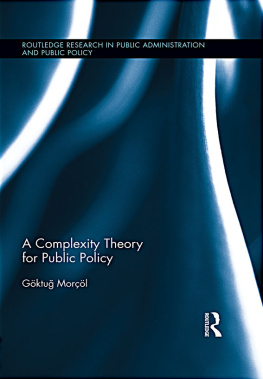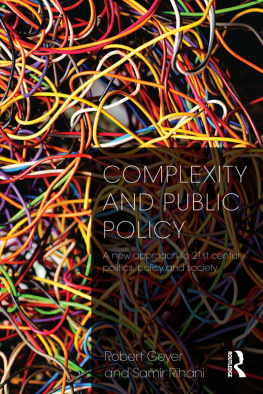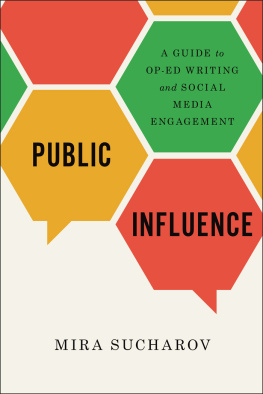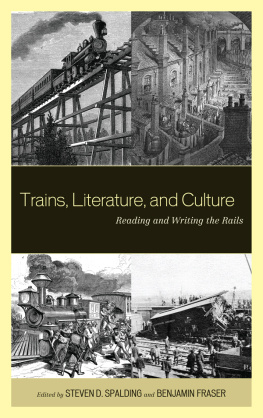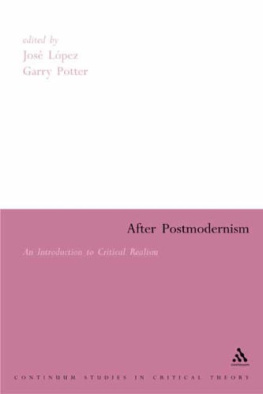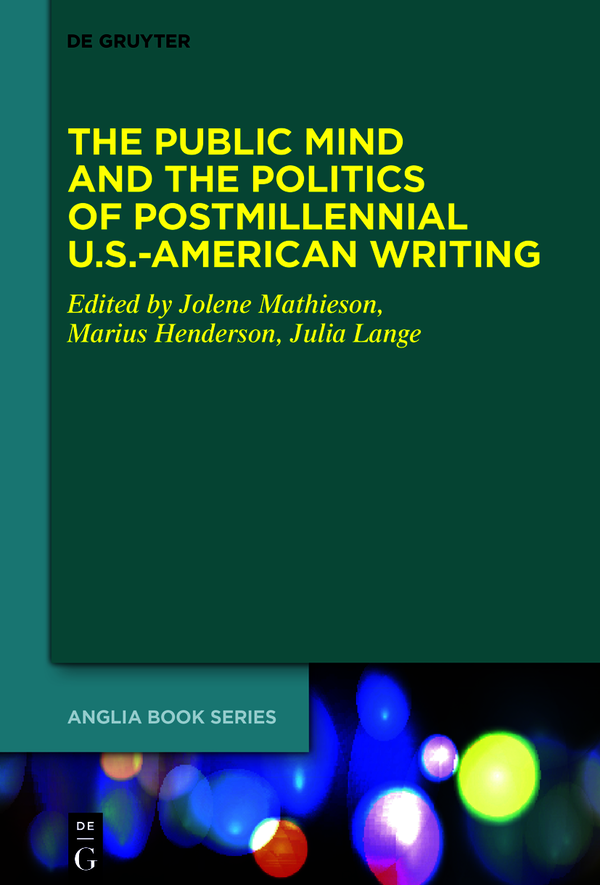Buchreihe der Anglia / Anglia Book Series
Edited by
Andrew James Johnston
Ursula Lenker
Martin Middeke
Gabriele Rippl
Daniel Stein
Volume
ISBN 9783110771282
e-ISBN (PDF) 9783110771350
e-ISBN (EPUB) 9783110771411
Bibliographic information published by the Deutsche Nationalbibliothek
The Deutsche Nationalbibliothek lists this publication in the Deutsche Nationalbibliografie; detailed bibliographic data are available on the Internet at http://dnb.dnb.de.
2022 Walter de Gruyter GmbH, Berlin/Boston
For Susanne Rohr, Professor of American Studies at the University of Hamburg
Acknowledgements
First and foremost, we would like to thank Susanne Rohr, Professor of American Studies at the University of Hamburg. She has been a guiding light at every stage of this project, and this volume would not have been possible without her.
We would also like to thank our colleagues at the Institute of British and American Studies in Hamburg, especially Astrid Bger and Ute Berns, for their encouragement and support in the creation and editing of this volume. A special acknowledgment is reserved for our colleague and friend Jan D. Kucharzewski, who was always willing to help, whether as a proofreader, a cheerleader, or as a support in tricky research logistics. His insights have proved invaluable.
We would further like to extend our sincere gratitude to all of those who contributed to the creation of this project, including Bettina Friedl, Ulla Haselstein, Herwig Friedl, Felix Sprang, Peter Hhn, Miriam Strube, Ruth Mayer, Eva Boesenberg, and Sieglinde Lemke.
And finally, we would also like to humbly thank Hubert Zapf, who played an instrumental role in shaping this book by offering us support at every step, from conceptualization, to editing and publishing.
The Public Mind and the Politics of Postmillennial U.S.-American Writing
Jolene Mathieson
Marius Henderson
Julia Lange
Abstract
The first chapter of The Public Mind and the Politics of Postmillennial U.S.-American Writing initially traces and recounts some of the major developments to have taken place in U.S.-American fiction in the last twenty years. Traditional, 20th-century modes of realism and postmodernism have since been succeeded by writerly practices that, in one way or another, are relatable to neorealism, whether it be via outright affirmation or critical experimentation and appropriation. The re-emergence of investments in notions formerly combatted by postmodernists, such as embodied authenticity, is accompanied by an ongoing awareness toward complexity and the fundamental entanglement of writers, critics, and the reading public with pressing political concerns, and at times oppressive, social and economic discursive and structural formations. The introduction provides an overview of all three sections of this volumes collection of essays as well as of each its fourteen chapters. All contributions share said awareness toward the seemingly inextricable intertwinement of postmillennial U.S.-American writing with the reading public as well as the extratextual contexts in which it is embedded, whether this writing be novelistic or more experimental.
In his essay at the turn of the millennium, Making the Public Mind: The Struggle for the Soul of the Sentence, the essayist and literary critic Sven Birkerts expresses his surprise that when confronted with what seems to many an impoverished, phrase-based paradigm in our great age of infotainment instant messaging, sound bites, banners, and chyrons U.S.-American fiction and other modes of writing had chosen not to respond with a mere stylistic mimicry of the diminished or the vacuous nor even with an updated version of mid-century minimalism, but rather, with narrative and structural complexity, with grammatical and lexical sophistication, and with social and cultural nuance (2001: 68).
Birkerts traces the turn in U.S.-American fiction in the last two decades of the 20th century away from the ascetic realism la Ernest Hemingway and Raymond Carver to what may be understood as a maximalist realism, or maximalism as he calls it a tendency toward expansive, centrifugal narrative that aspires to the complexity of contemporary life (68). This turn, he argues, took place in tandem with two important interrelated trends. The first one is a recognition that the great populist prejudice (69) of equating American writing and Americanness with the plainspoken tradition (70) was no longer, if it ever had been, an apt realist paradigm for confronting and negotiating the social realities of modern life. The initial attraction to ascetic realism might be explained by its appeal to the mundane and the minute in its creation of uneasy portraits of American middle-class domesticity (70). With its emphasis on plain English and plain lives, it would seem to embody a similar democratic ideal in prose that Walt Whitman would have argued for poetry.
In its rejection of broad political themes, narrative complexity, and fancy language, ascetic realism is only marginally related to what we often associate with realism: the socially conscious and political style of writing pioneered by William Dean Howells in the second half of the 19th century. Conversely, ascetic realism withholds any sense of the social, especially any feeling of interrelatedness or connectedness to the political, wider world out there. It is only palatable as a realism because it creates a sense of connection through individualism, through loneliness and loss perhaps, but also through a blunt matter-of-factness about simply being in the world. But herein lies the paradox, as Birkerts puts it (we might also call it deceit) For if the subject matter was, in this most reduced sense, realistic, the impetus of the mode was aesthetic (7071). By way of example, Birkerts points to the highly mannered style of Carver, the carefully-crafted hyperawareness of Amy Hempel, and the clipped sentences of Hemingway (ibid). While the poignant moments captured in ascetic realism might be lyrical, and for the most part, mimetic, snapshots of ordinary mostly white, middle-class, domestic American life, its reductionism, interiority, and pared-down poetic aestheticism obviously cannot demonstrate sustained contiguity or fidelity to the rich, messy, and often brutal political, racialized, gendered, networked reality of contemporary American life.
The failure of the ascetic, plainspoken model of realism is concomitant with the second trend discussed by Birkerts: the cultural dominance of electronic communication and digital media in all aspects of American life. The gradual triumph of the maximalist approach (72) by postmodern realists like, say, Thomas Pynchon, Don DeLillo, and Helen DeWitt, of the so-called neorealists like Jonathan Franzen and Dave Eggers, and the more uncategorizable realists like Siri Hustvedt, Toni Morrison, and Colson Whitehead bespeaks of a desire on the part of late 20th-century (and 21st-century) U.S.-American writers to engage with the public sphere in their fullest capacity as political actors as public intellectuals in an attempt to make sense of the new situation (69). Regardless of style or ideological bent, what these writers (and so many more of course) have in common is a willingness to comment on, negotiate, critique but also embrace and herald the complexity of an American culture situated in a larger, highly politicized, globalized world undergoing radical change vis--vis digitalization, the Internet, and the ubiquity of advanced technologies. Writing of Pynchons influence on shaping maximalist realism, Birkerts points to how he patented a style, an approach that could later be adapted to rendering the strange interdependence of a world liberated from its provincial boundedness (ibid).


